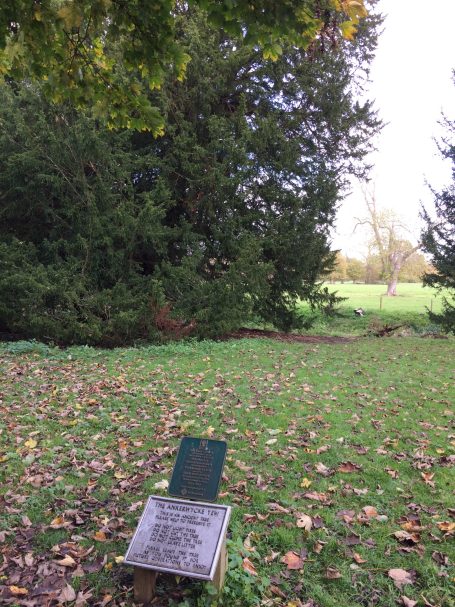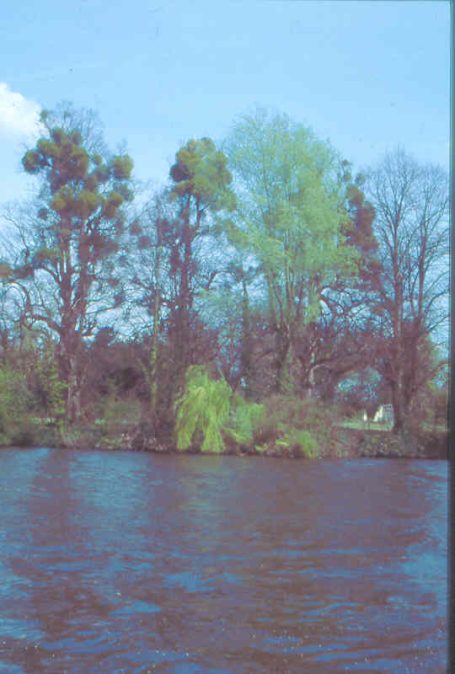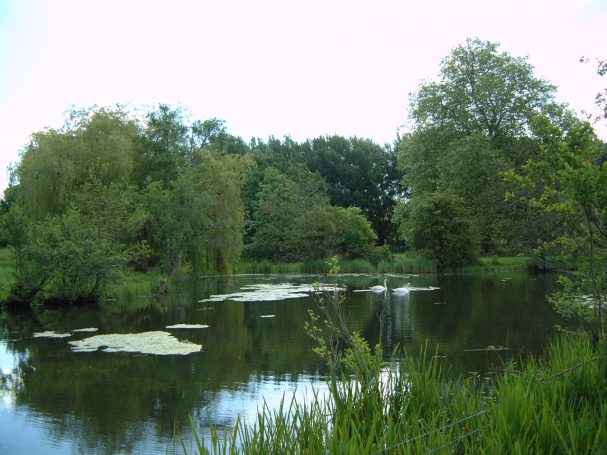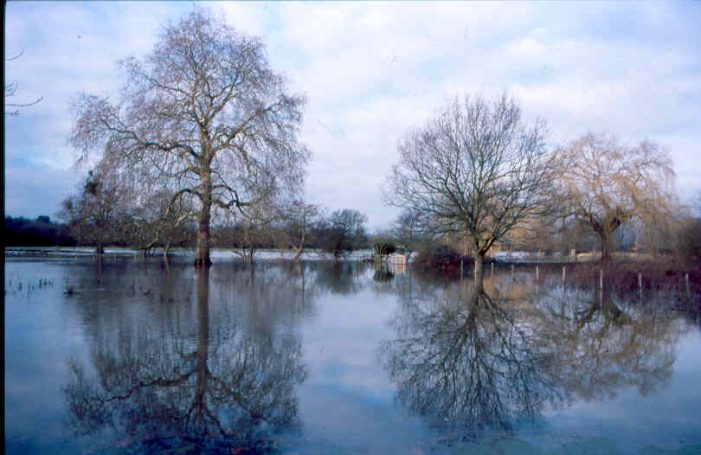
The Ankerwycke Yew lit by evening sun. Photo credit :Sophie Shepherd
Yews are strongly linked to past cultures, being mostly associated with religious sites due to their symbolism of life, death and rebirth. Many churchyard yews predate the churches themselves, and Ankerwycke is one of the largest to be found at a monastic site.
Research has shown that the tree is located to at the east end of the medieval church, and its size may be exaggerated by being one of the few yews to grow adjacent to a constant source of water (most other yews grow on elevated sites).
If the precursor to the 12th century nunnery was an Anchorite or even a Saxon religious site, it would allude to a 7th century timber church. This date would, in my opinion be the most likely date for the yew, alluding to an age of some 1400 years old.
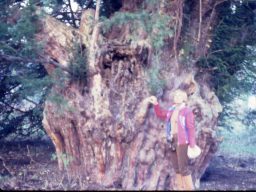
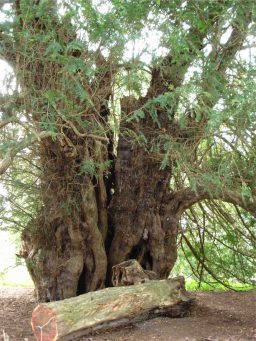




The Ankerwycke Yew
With a girth of in excess of 33 ft at the base, and 36 ft at chest height, the magnificent Ankerwycke Yew is an ancient tree to be revered.
There is much speculation over the age of the Yew, with dates ranging from 1500 to over 3000 years old. It has been honoured in art, poetry and is considered one of the possible sites associated with the sealing of Magna Carta.
Some cite that this Yew was planted by Egyptians, some by Bronze Age cultures, and myself suggest a Saxon foundation. It's likely we will never know, and with its branches in this millennia and its' roots in another, the Yew is an important conduit to our past. Whether that is religious, historic or ritual based, any visit to Ankerwycke cannot fail to stop and admire such an ancient specimin,

The Ankerwycke Yew lit by evening sun. Photo credit :Sophie Shepherd
Gallery
If you can't get to the Ankerwycke Yew, here are a few more pictures
Images of the Yew from Secondary Sources
The Ankerwycke Yew has been the subject matter of a number of artists. Here are a few:
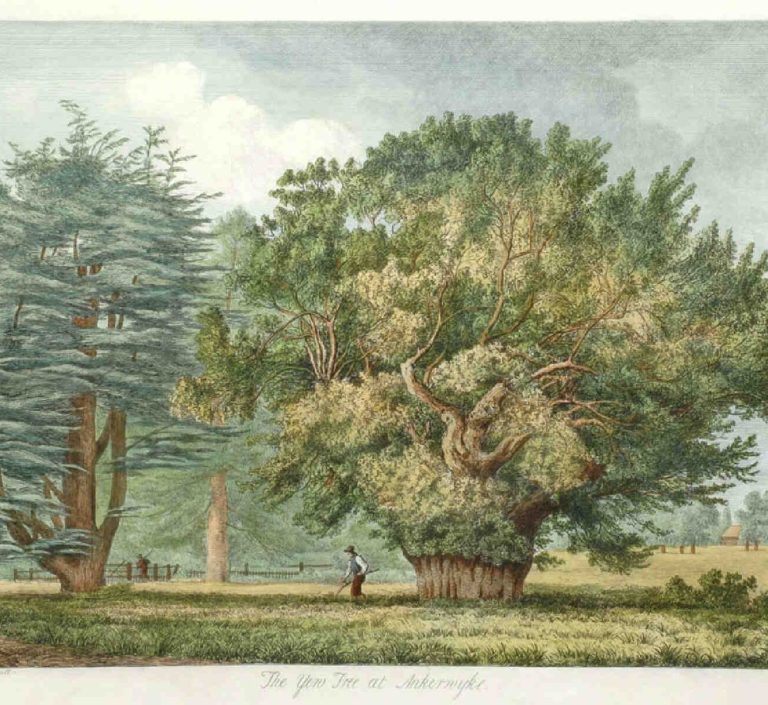
Jacob George Strutt (1784–1867)
"The Yew Tree—Ankerwyke, Middlesex, 1822"
Published by J.G. Strutt in Sylva Britannica; Or, Portraits Of Forest Trees Distinguished For Their Antiquity, Magnitude, Or Beauty. London. Published A.J. Valpy for J.G. Strutt and Colnaghi, 1826
Strutt recorded a measurement of 27 ft 8 inches girth at 3ft from the ground, and at 8ft from the ground 32 ft 5 inches in girth. The large branches on either side of the trunk seen in the etching, are evident today on the trunk of this tree, as healed stumps.
Strutt states that "The yew tree at Ankerwyke, near Staines, the seat of John Blagrove Esq., is supposed to have flourished there upwards of a thousand years. Tradition says, that Henry VIII occasionally met Anne Boleyn under the lugubrious shade of its spreading branches, at such times as she was placed in the neighbourhood of Staines, in order to be near Windsor, wither the King used to love to retire from the cares of state. Ill-omened as was the place of meeting under such circumstances, it afforded but too appropriate an emblem of the result of that arbitrary and ungovernable passion, which, over-looking every obstacle in its progress, was destined finally to hurry its victim to an untimely grave. It is more pleasing to view this tree as the silent witness of the conferences of those brave barons who afterwards compelled King John to sign Magna Carta, in its immediate vicinity, between Runnymede and Ankerwyke House, than as the involuntary confidant of loves so unhallowed and so unblest as those of Henry and Anne Boleyn."
The image is of immense value as it shows how manicured and well maintained the pleasure ground was. The Yew was maintained by keeping its upper branches shorter, and thus less weighty, which is perhaps why the tree put greater growth on its trunk, creating its vast base that is so spectular to see today. The parkland to the east is planted with trees, and a large Cedar of Lebanon, can be clearly seen further back - and this can be seen in the Henry Taunt Postcard shown in 'Georgian History' of this website.
The building seen in the distance is considered to relate to Ankerwycke Farm, which adds evidence that this was constructed by Blagrove, and not Harcourt.
.
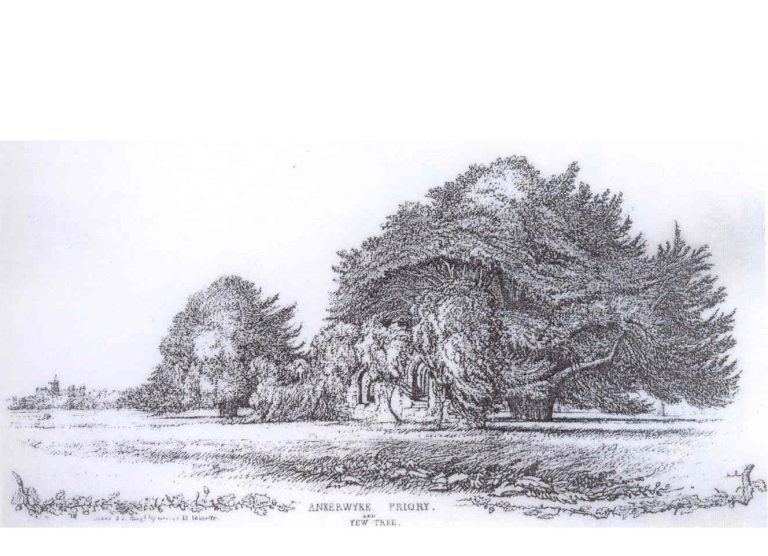
George Orleans Delamotte (1788–1861)
This rather romantic sketch shows the Yew adjacent to the priory ruins. The sweeping branches of the Yew are complemented by the dramatic arches and windows of the priory. Drawn after 1805, Delamotte may have greatly embellished what was survived as a folly - but W Gyll also refers to a second ruin facing the park, so on refelction, this view can't be discounted.
Windsor Castle can be seen to the far left, so it would make sense that the image is viewed from the South East. A second large tree can be seen, and possibly is also a Yew,
Delamotte was an art teacher in Reading and it must be argued that the ruins portrayed are purely fictional, and not based on any known surviving ruins at the time.
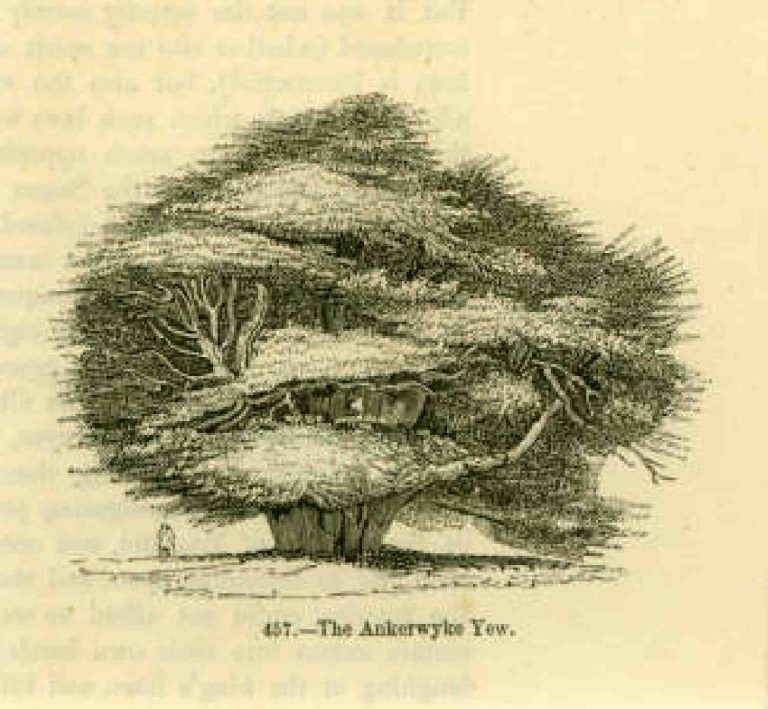
19th Century Etching
This etching by an unknown artist shows a well maintained, healthy Yew. An artificial browse line was maintained in order for visitors to see and access it's vast trunk. The view is possibly from the south side, with the low bow to the right still evident today as a sawn off scar.
My reference for source publication of this image is not presently known.
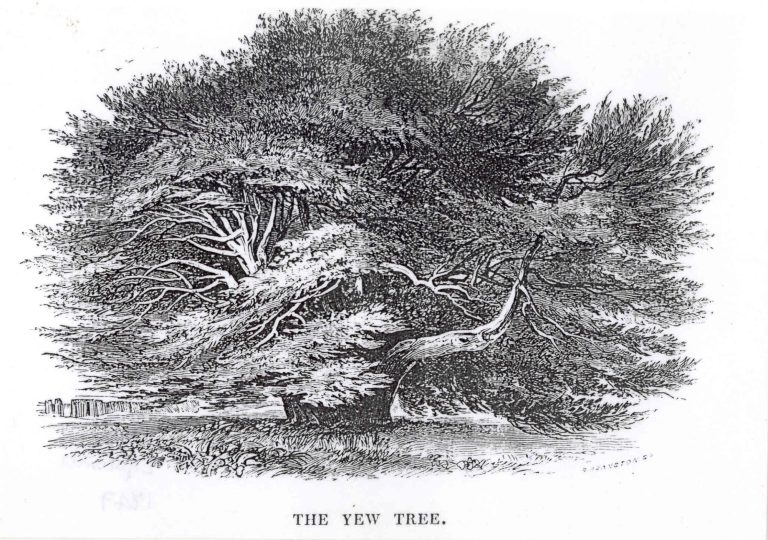
Robert Edward Branston (1803 - 1877)
Printed in Lipscomb's history and Antiquities of the County of Buckingham, 1847 p600, this woodcut is dated 1839. Branston's father was also an accomplished woodcutter and engraver.
However way the Yew is drawn is very similar to the images above, and it has to be suggested that this is copy of the image by Delamotte
Ankerwycke in Prose
In 1807 William Thomas Fitzgerald wrote the following poem, which was printed in Strutt's 1822 publication Sylva Britannica:
What scenes have pass’d, since first this ancient Yew
In all the strength of youthful beauty grew!
Here patriot Barons might have musing stood,
And plann’d the Charter for their Country’s good;
And here, perhaps, from Runnymede retired,
The haughty John, with secret vengeance fired,
Might curse the day which saw his weakness yield
Extorted rights in yonder tented field.
Here too the tyrant Henry felt love’s flame,
And, sighing, breathed his Anne Bolyn’s name;
Beneath the shelter of this Yew-tree’s shade,
The royal lover wood’d the ill-star’d maid;
And yet that neck, round which he fondly hung,
To hear the thrilling accents of her tongue;
That lovely breast, on which his head reclined,
Form’d to have humanized his savage mind;
Were Doom’d to bleed beneath the tyrants steel,
Whose selfish heart might doat, but could not feel.
O had the Yew its direst venom shed,
Upon the cruel Henry’s guilty head,
Ere Englands sons with shuddering grief had seen
A slaughtere’s victim in their beauteous queen!"
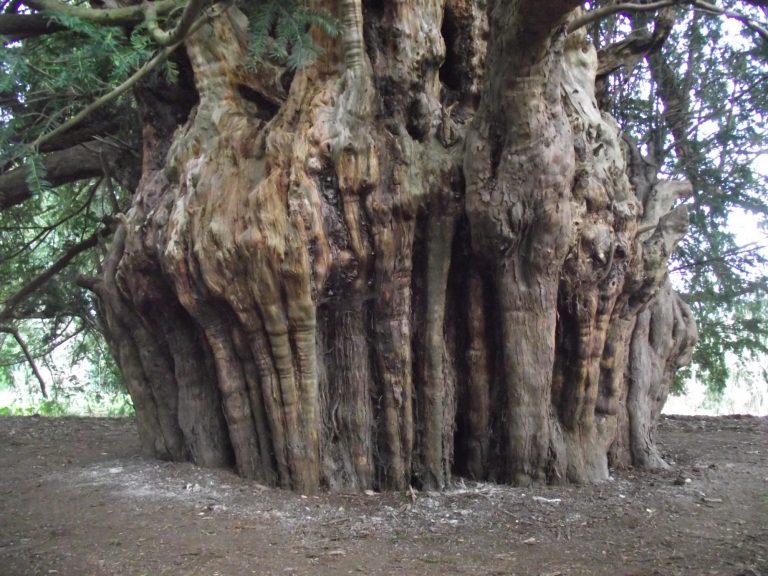
The impressive bowl of Ankerwycke. The south facing side of the trunk grows very differently to the heavily shaded north facing side.
1880 Poem by Joseph Ashby-Sterr (1836-1917)
Joseph Ashby-Sterry wrote The Music of Leaves, which was published in the 'Star' and 'World' newspapers in 1880.
The reference to 'A Sculler's Song' is a nod to those rowing boats on the Thames, and suggests that the oarsmen would stop by Ankerwycke to rest.

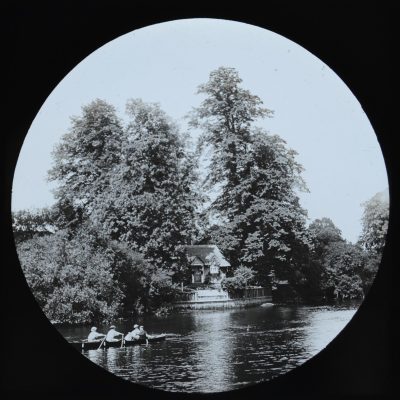
Magic Lantern slide c1880 showing rowers on the Thames at Ankerwycke Picnic - a small cottage built on the bank.
Did Henry VIII woo Anne Boleyn under the Ankerwycke Yew?
Like many other notable trees, such as the Robin Hood Oak at Sherwood, or 'Old Knobbly' at Manningtree (a Mathew Hopkins /witches link) the Ankerwycke Yew has been associated with more than one event or occasion.
In the case of Ankerwycke, one such event can be examined to suggest that oral commentaries overtime can easily become altered, and retold differently. An this is certainly evident with Henry VIII.
Wraysbury was a Royal Manor for sometime, and was gifted by the Crown, as dower lands for their Queens. But despite its proximity to Windsor, there is no evidence that Henry VIII ever set foot on Ankerwycke. His link is purely associated with the dissolution of the Monasteries, and the need to break from the Roman Catholic Church. So why does this story exist?
The answer is a lot simpler than you may think:
In 1551 Sir Thomas Smith acquired Ankerwycke and built a mansion there. He was Secretary of State for France, and served both Edward VI and Elizabeth I. Indeed the latter monarch visited Smith's Mansion at Ankerwycke on the evening of August 8th 1565. Unfortunately he was not present, an he wrote in a letter to the Earl of Leicester"
‘That it pleased the Queen’s Majesty to take my poor house at Ankerwick I am most glad, but sorry that it was not mine and my wife’s also good fortune, that my wife should be there at that time after our rustic manner to entertain her Highness. Marry that your honour writeth that her Highness was merry there recompenseth all. And
I pray God I may once see her Majesty merry there, and your Lordship together. Then I shall reckon my house twice sanctified and blessed’. [Pepys I.443].
The villagers in Wraysbury would have been most excited to see the Queen's court come through and stop at Ankerwycke. Overtime this story got told to descendants, and then became a faded memory. Only the bare facts that a monarch and a female came to Ankerwycke.
Indeed, as I have proved the female and the monarch were one and the same: Queen Elizabeth, and not Anne Boleyn.
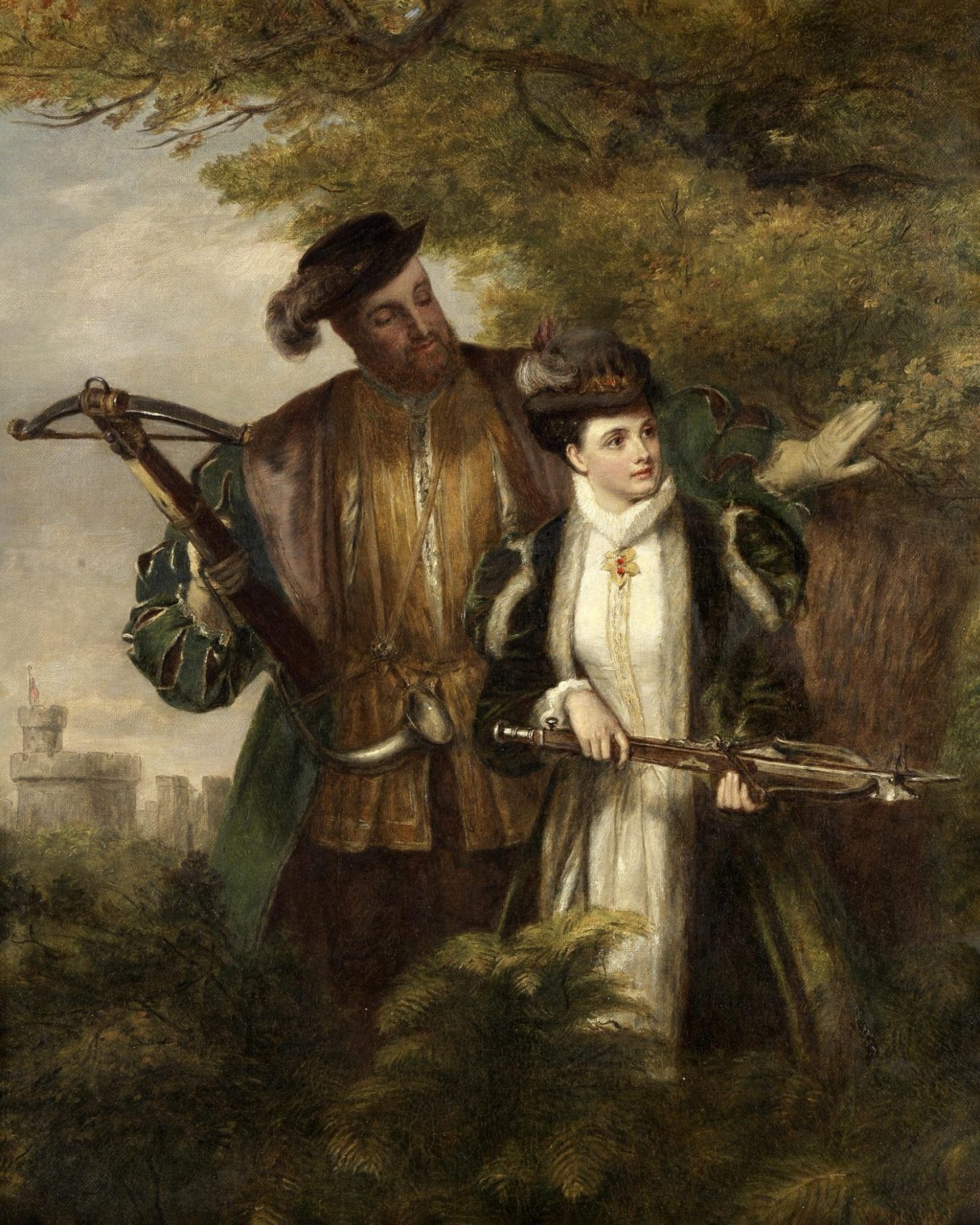
Painting by William Powell Frith, RA (British, 1819-1909)
Henry VIII with Ann Boleyn deer shooting in Windsor forest
The fictional event was immortalised by WT Fitzgerald in 1807 who wrote:
"Here too the tyrant Henry felt love’s flame,
And, sighing, breathed his Anne Bolyn’s name;
Beneath the shelter of this Yew-tree’s shade,
The royal lover wood’d the ill-star’d maid"
Links to External Websites about the Ankerwycke Yew
Click on the link below the image to take you to the respective site
Other notable trees at Ankerwycke
The landscape of Ankerwycke is abundant with wonderful trees. Near the yew is a line of younger yews, perhaps once planted as a hedge, but since allowed to grow tall. In the fields and parkland can be found Black walnut, Acacia, London Plane and Sweet Chestnut, as well as Lime, Red Oak and loft pines.
At one time, avenues of Elm led from the Staines Road to the mansion, but in places these have been replaced with an avenue of Poplar - which were only planted in the 1970s.
© Copyright. All rights reserved.
We need your consent to load the translations
We use a third-party service to translate the website content that may collect data about your activity. Please review the details in the privacy policy and accept the service to view the translations.

